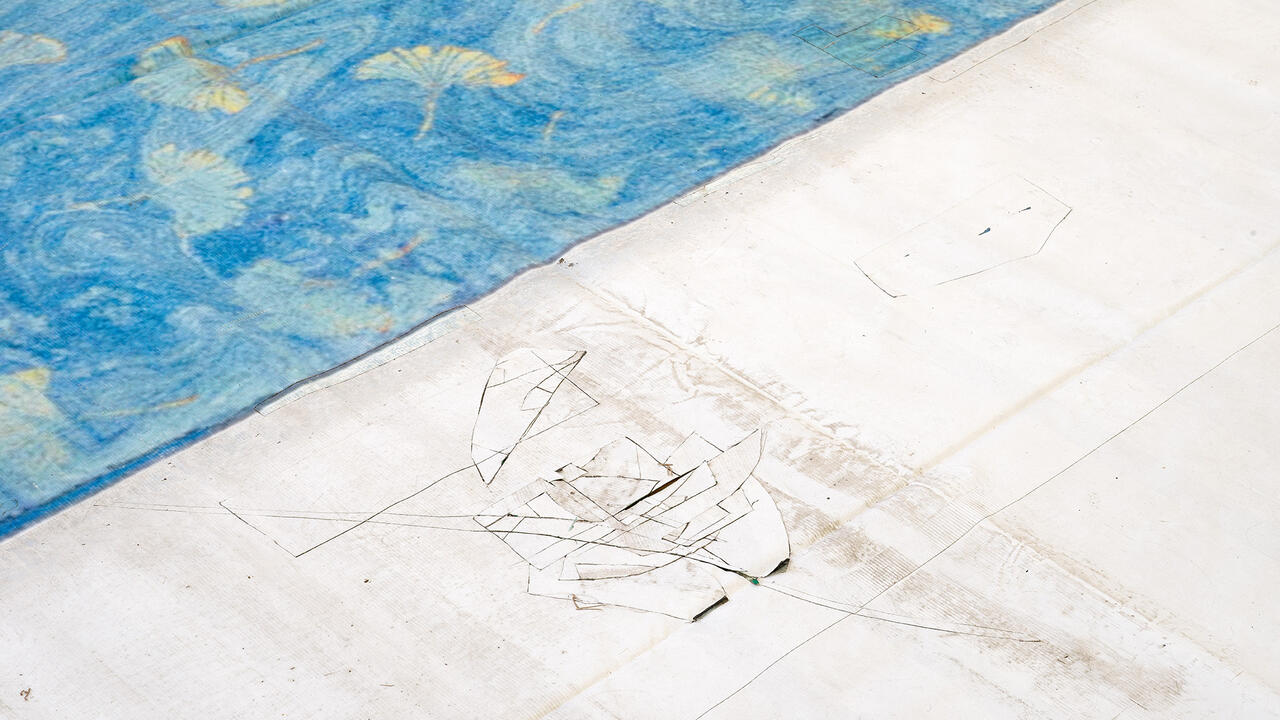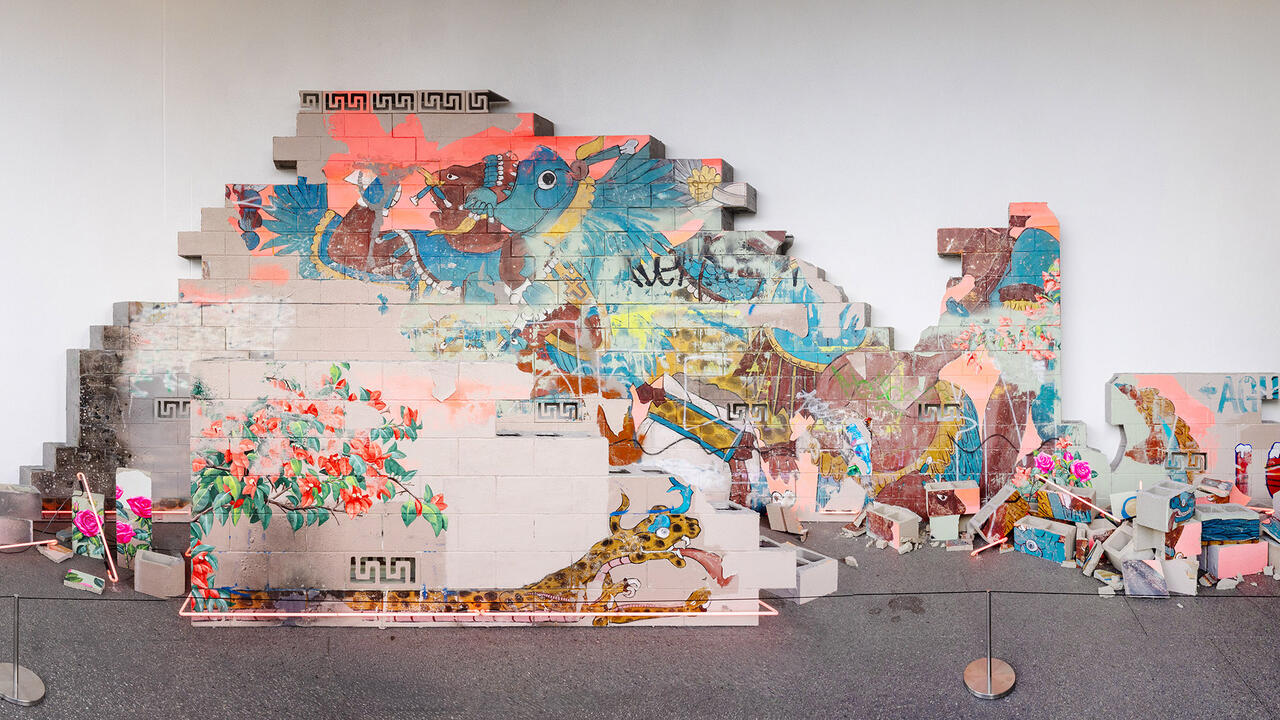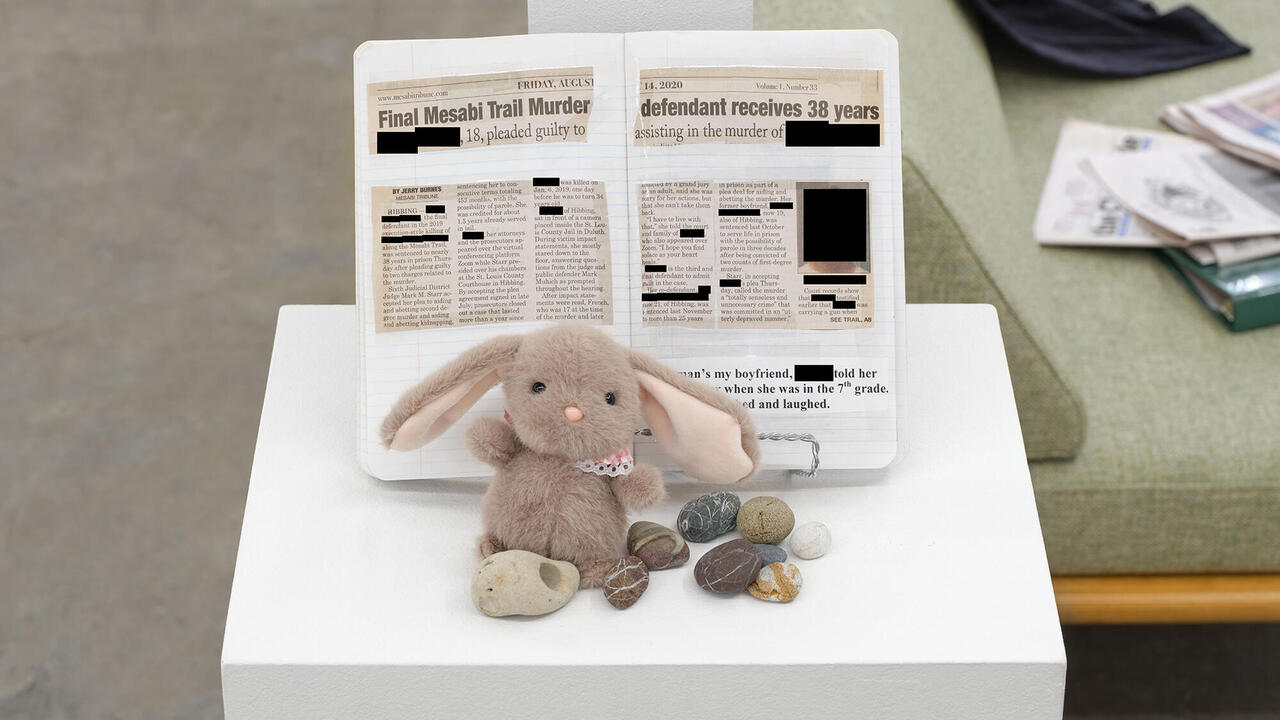Olga Balema
Hannah Hoffman Gallery, Los Angeles, USA
Hannah Hoffman Gallery, Los Angeles, USA

I was laughing even before I entered the gallery. Beside the door to Hannah Hoffman, a notice announced the title of Olga Balema’s exhibition: ‘On the Brink of My Sexy Apocalypse’. There was certainly nothing laugh-out-loud funny in the show, but Balema’s work has an electric material intelligence and sense of the unexpected that might be termed, inadequately, wit.

From the entrance, the main gallery appeared to glow snot-green. The effect was caused by a loosely laid floor of linoleum, itself an artwork titled Return of the Repressed (2017), and another floor piece made from steel rods, photographs and fluorescent-green holographic paper, called Manifestations of Our Own Wickedness and Future Idiocy (2017). In places, the paper and linoleum wrinkled, curled up the wall or was pierced with grommets as if it were meant to be hung. Faint stains described where puddles had dried: water that had presumably leaked out of the sculpture Everyone Grows Relief (2016), which still cradled a shallow pool in the latex-coated fabric that sagged from its steel armature.
Leakiness is a central preoccupation for Balema. Amongst her most recognized works are the transparent, water-filled PVC sacks that she lays on the ground to act as containers for diverse sculptural and pictorial elements. Four such objects are arranged on the linoleum floor of ‘On the Brink of My Sexy Apocalypse’: Drives, The Look, Fractures and Become a Stranger to Yourself (all 2017). (Balema is excellent with titles, though they provide little in the way of narrative guidance.) In Drives, a steel rod (already vividly rusting) is threaded with five crude latex ribs, while a piece of emerald tulle fabric is pinned beneath. If this is a drawing of sorts, then its most emphatic mark is the condensation-filled air pocket beneath the PVC – a feature common to these works that makes them seem like fermenting science experiments, and a future conservator’s nightmare.

Wetness, and the question of its containment, is often what makes Balema’s sculptures feel alive. Our bodies, of course, are around 60 percent water, and Drives could be interpreted as constituting a supine human form. On flat pieces of latex floating at either end of the PVC sack, Balema has sketched faces; instead of corporeal completeness, however, her figuration here leads me towards a sense of the sculpture as a reliquary, or a grave containing decomposed parts. If that seems to contradict the idea of her work’s aliveness, remember that even a rotting corpse is animated by myriad micro-organisms.
Another standout piece in the show was alive – or, rather, undead – in a different way. A Thing Filled with Evil Streams (2016) consists of a hunk of wood on which rests some latex vertebrae and ribs. Nuzzling against it are three white worms, made of modelling clay, which wriggle thanks to mobile-phone motors wired up to AA batteries. Sometimes, the gallerist told me, the disobedient worms vibrate out of position and have to be replaced.

This is part of what makes Balema’s exhibition compelling: the knowledge that the installation will persist, buzzing away (or slowly leaking) even after you leave, like a posthuman landscape. The material unruliness of her work situates it on the brink of transformation – whether through apocalypse or entropy – and provides something akin to narrative tension. The gallerist revealed that the exhibition was based, in part, on a film Balema is making, set in a swamp. I cannot wait to find out what happens.
Main image: Olga Balema, Manifestations of our own wickedness and future idiocy, 2017























